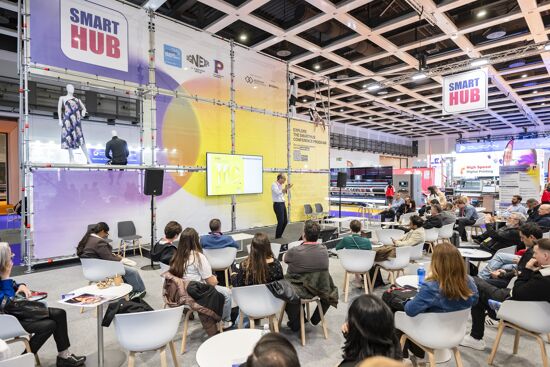The European Union’s Green Deal

In December 2019, the European Union (EU) announced that it is investing €100 billion to become the world’s first climate-neutral continent by 2050. By climate-neutral the EU means that emissions will be balanced with the removal of warming gases from the atmosphere.
This is an ambitious undertaking. Much of the funding will be directed at business and industry as part of the EU’s commitment to protect human life, animals and plants through reduced pollution. In addition, the EU has aspirations to help companies become world leaders in clean technologies and products, and to manage the transition to climate neutrality with full inclusivity. This means that emissions are controlled balanced with ways of removing greenhouse gases from the atmosphere. The €100 billion is only the start: the EU aims to mobilise an astonishing €1 trillion over the next decade to jumpstart the continent’s shift to a net-zero economy.
For the graphics industry this could be an extremely big deal, not just for printers and publishers but also for developers. Improving the recyclability of consumables, or improving process efficiency and manufacturing impacts would all qualify for EU support. And for others in the supply chain, with any luck, industry associations are already finding out more about how this initiative can support members and their business partners.
The EU’s key policies include investment into new emissions-cutting and green technologies and EU climate-neutral business investments to help with the transition, so that no one is left behind. It has established a new funding scheme to help businesses to adjust to greener production methods. On average European industry uses only 12% of recycled materials, so improving this rate will be a key priority, one that the paper people should be especially keen on.
A key part of the strategy is to provide support for businesses so that they can modernise to be more efficient and use more recycled materials. This could also include support in supply chains for sorting and processing of waste. Another important goal is to reduce resource extraction, because between 1970 and 2017, this has tripled and keeps growing.
Perhaps of greatest interest is the money the EU is putting into its efforts. It will spend €100 billion on state aid to boost green investing and to fund transitions to this Green Deal objectives. This is a lot of money which will come from new money plus various other EU funds where procedures for claiming and allocating money are proven.
The EU is already a pioneering leader in the fight to combat climate change and provides other geographies with a model they can observe. What works in the EU may not work elsewhere or for all industries, including graphics. But its efforts set the bar for other regions, sparing them the effort of coming up with new ideas. Most importantly, the EU is taking all the risk to actually make a difference and to help slow down global warming.
Source Information: This article was produced by the Verdigris Project, an industry initiative intended to raise awareness of print’s positive environmental impact. This weekly commentary helps printing companies keep up to date with environmental standards, and how environmentally friendly business management can help improve their bottom lines. Verdigris is supported by the following companies: Agfa Graphics, EFI, Fespa, Fujifilm, HP, Kodak, Miraclon, Ricoh, Spindrift, Splash PR, Unity Publishing and Xeikon.
Topics
Interested in joining our community?
Enquire today about joining your local FESPA Association or FESPA Direct
Recent news

Industry Experts Explore the Evolution of Smart Manufacturing in the Textile Industry
A FESPA SmartHUB roundtable at Personalisation Experience 2025 discussed smart manufacturing's transformative impact on the textile industry. Experts highlighted the shift to on-demand customisation, driven by digital printing, data analytics, and automation. Key takeaways included enhanced machine control, significant waste reduction through intelligent software and colour management, and improved sustainability via energy efficiency and near-shoring, ensuring agility and environmental responsibility in textile production.

FESPA 2025 gathers leading visionaries from across the speciality print industry in Berlin
FESPA Global Print Expo 2025, European Sign Expo and Personalisation Experience (6 – 9 May 2025, Messe Berlin, Germany) welcomed Visionaries from across the speciality print industry to shape the future of print, develop forward-thinking business strategies, and explore innovative ways to translate emerging industry trends into tangible growth opportunities.

Exploring Cutting-Edge Textile Printing Innovation with Adobe Print Engine 7
Adobe PDF Print Engine 7, launched at FESPA Global Print 2025, significantly advances textile printing. Debbie McKeegan shares how it automates non-white substrate management and RGB colour handling, expands colour gamuts with in-RIP multicolour transparency blending, and streamlines workflows for efficiency and sustainability. This update boosts customisation, reduces waste, and positions businesses at the forefront of digital print innovation.

FESPA Global Print Expo 2025 - Overall Highlights
FESPA Global Print Expo, Europe's leading print and signage exhibition returned to Messe Berlin from 6 - 9 May 2025.